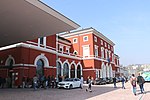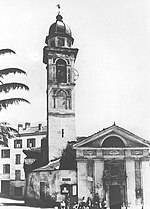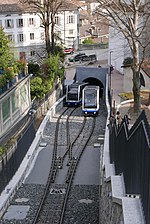Swiss National Sound Archives

The Swiss National Sound Archives are the sound archives of Switzerland, based in Lugano. Its mission is to collect sound recordings related to the history and culture of Switzerland, to make them accessible and to make them available for use. In terms of audio recordings, it thus fulfils a similar function to the Swiss National Library in the field of literature. Since 2016, the National Sound Archives have been an organisational part of the Swiss National Library. The collection has more than 500,000 audio carriers and 20-25,000 audio documents are added each year (as of 2018).The institution is a member of the International Association of Sound and Audiovisual Archives (IASA) and the Audio Engineering Society (AES). The Swiss National Sound Archives is also a member of the Association for Recorded Sound Collections (ARSC) and the International Association of Music Libraries, Archives and Documentation Centres (IAML).
Excerpt from the Wikipedia article Swiss National Sound Archives (License: CC BY-SA 3.0, Authors, Images).Swiss National Sound Archives
Via Soldino, Circolo di Lugano ovest
Geographical coordinates (GPS) Address Nearby Places Show on map
Geographical coordinates (GPS)
| Latitude | Longitude |
|---|---|
| N 46.006 ° | E 8.9399 ° |
Address
Conservatorio della Svizzera Italiana
Via Soldino 9
6932 Circolo di Lugano ovest, Molino Nuovo
Ticino, Switzerland
Open on Google Maps









